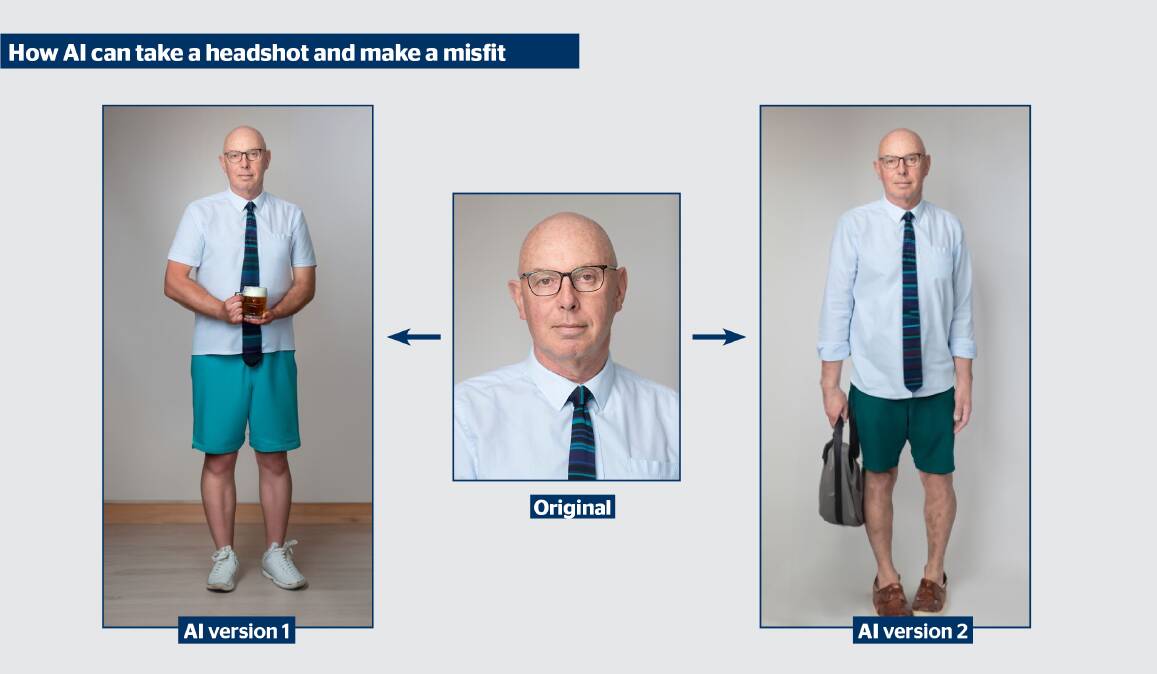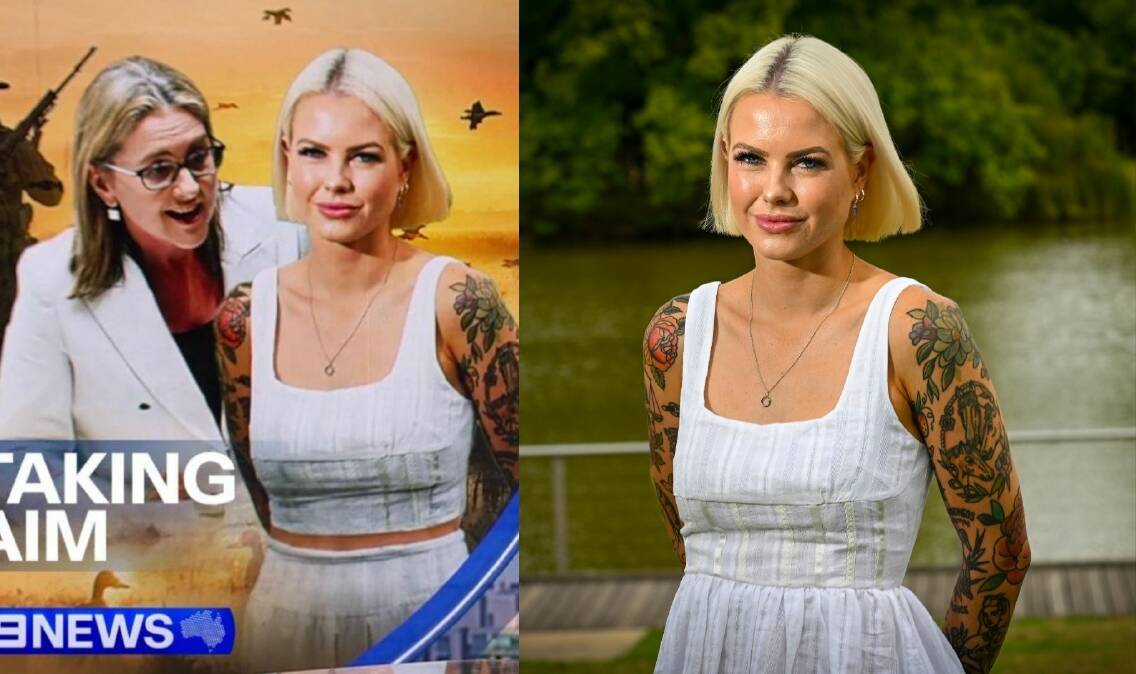Just a bit of an accident caused by a machine is the way Channel Nine is playing its embarrassing and deeply offensive portrayal of Georgie Purcell, the Victorian state MP whose doctored picture appeared on its news with enhanced breasts.
The graphics department got a picture of the politician, Photoshopped it and, lo and behold, out it came with, as she, the victim, put it, "bigger boobs".
"During that process, the automation by Photoshop created an image that was not consistent with the original," Hugh Nailon, Director of Nine News Melbourne said in a statement.
So how might it happen? Can all the blame conveniently go on a machine?
Photoshop now has a brain so it can imagine how missing parts of a picture might look if it's only got part of that picture. Give it the head of woman, for example, and it imagines the rest - imagine being the important word.
It's called "generative fill" - give Photoshop a detail and its Artificial Intelligence generates and fills in the rest (or how the machine imagines the rest to look).
So how much accuracy and reality is in the final processed picture depends on how much real detail goes into the machine in the first place.
"It really depends on the source imagery that's being used and how tightly it was initially framed or cropped," Dr TJ Thomson, an expert at RMIT university, said.
"When a wider-angle shot that shows Purcell's body from head to hips is expanded, the generative AI just extends the dress.

"But when more tightly framed or cropped versions of the image are used-ones that stop at the neck or along the mid-torso, for example-Photoshop has to imagine a lot more about what lies below and, in this case, could plausibly generate images with more dramatic variations, including the one that shows some midriff."
The midriff was one distortion (in the original picture, Georgie Purcell, has a white dress without a break in the middle. And she said that her real body has a tattoo across her belly (unlike in Channel Nine's generated picture).
But what about the breasts?
You can argue about whether they have been actually enlarged - though Georgie Purcell thought they had been - but there is no doubt that they have been emphasised, perhaps with extra shadowing below them. She has been sexualised.
Chanel Nine said it had taken a tighter shot of the MP from the web. "Our artist wasn't aware of the wider image when she began the project," a spokesperson for the company said.
"Using the tighter, hi-res version of the photograph, we needed to extend the image to fit the template of our News Graphics package."
Nine said that Artificial Intelligence did the work: "AI created the image that we ultimately used, but we made the mistake of putting it to air."
But Nine's defence that it was just the computer doesn't hold water.

Adobe which owns Photoshop said that the use of its generative AI features "would have required human intervention and approval".
Dr Thomson from the RMIT doubted that Nine's process was "fully automated".
And even if it was, "having journalism produced by AI without human oversight goes against the Media Entertainment Arts Alliance of Australia Journalist Code of Ethics.
"The code states journalists will 'present pictures and sound which are accurate' and disclose 'any manipulation likely to mislead.' Journalists aren't fulfilling these responsibilities if they use AI carelessly."
So what happened?
A charitable view is that the graphics artist, under a very tight deadline, was tasked with making a picture for the news. She had other tasks and didn't take much notice of whether the doctored image was accurate.
The uncharitable view is that Nine sexed up the image. It's a commercial channel and didn't think it would get caught.
Either way, Artificial Intelligence presents huge challenges for journalists, citizens and even for democracy. If we can't believe what we see and hear anymore, the potential for damage and mischief is immense.







